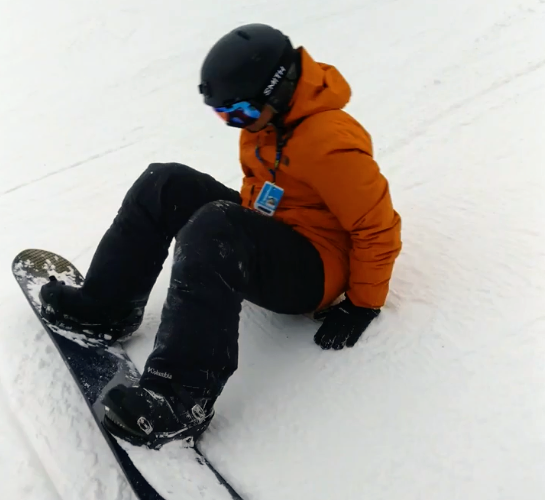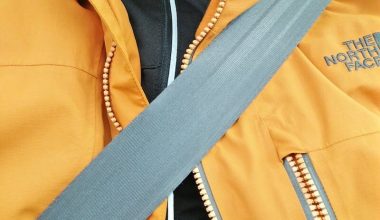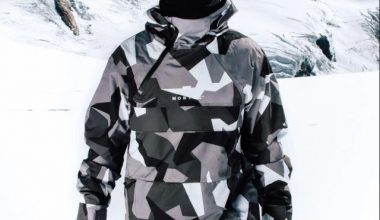Once you start snowboarding, you’ll be leading with your dominant foot. For most people they lead with their left (you’re then called regular) or if your dominant is right, you’re called goofy. Now you can go through life enjoying snowboarding by just sticking to that or you can also learn how to ride switch.
What is Riding Switch?
Riding switch is when for example your dominant foot is your right foot (and you lead with that–meaning that when you snowboard your right leg is the “front”) BUT you can also snowboard the other way/in reverse/leading with your left! You’re able to strongly, or at least comfortably ride down the mountain with your lesser foot.
Why? (aka benefits, advantages)
Fun!
Let’s start with the fun stuff then! First, it will be cool for your friends to find out: “what! he can ride the other way?!”
Terrain Parks
If you’re into terrain parks, this suddenly becomes a requirement. If you want to do 360°’s, well you’ll have to learn how to do 180° first, which is your switch game. There’s also the situation wherein you launch yourself out a feature then you land (whether un/intentionally) switch.
Practical Applications
There are lots of practical application to this as well:
Safety
First, there’s the safety aspect. There may be situations later on where you actually end up doing a 180° on your board and next thing you know you can’t get out of it until you ride it out for a bit. It could be landing from a terrain park feature, or backcountry, or you had to do an abrupt stop and then your less dominant foot went forward while you’re on a narrow path, etc.
This happened to me at Blue Mountain. They have a green trail from the top but it’s a narrow path. I was a beginner then. If you’re looking down, there’s a wall of rocks on my left, and a cliff on my right (Ikr, should’ve been an ‘easy’ trail). My stronger edge control was my heel edge (and I’d prefer to slow/stop facing the cliff while I heel edge slide) but also I’m a goofy (I lead with my right). So now I’m in this weird dilemma:
do I ride normally (goofy) where I face the wall, can’t see the cliff, and can’t brake. I can’t brake because I was still a beginner and if I brake, I end up veering more to the right (the cliff)
or
do I ride switch? I get to face the wall, I can use my heel edge to slow/stop, BUT I can’t move forward at all? I could …but uncontrollably, and throwing myself and some people off the cliff lol.
You can’t even unstrap because it’s a slope and it’s banked!
Versatility / Fatigue Prevention
I experienced this when I was in Banff and Whistler. I learned the important of switch riding already so I was practicing enough already before I got there.
I’m coming from the tiny hills of Ontario where it can take you 2mins (speeding) to get down and then now to actual mountains where it takes you forever to get down. You can try to speed it but since it’s so long, it’s such a leg burner that when I tried it, I was forced to actually stop and take breaks. (or maybe I’m just a weak ass mf LEL)
As you learn how to snowboard, you’ll learn how to slow/stop using your heel edge or your toe edge. You’ll develop strength unevenly or at the very least you’ll have some preferences. Also, you’ll also experience that after several hours snowboarding in a day and using one side more than the other, you’ll develop fatigue (either your quads or calves to name a few).
You’ll also notice later on the your dominant/front leg is more fatigued than your back leg. This is because you’ve been riding that one direction for a while now.
Riding switch is the instant relief of it all. Riding switch lets your front leg rest, and at the same time, you’re substituting it with your fresher/energy-filled other leg.
It definitely prolongs your time on the mountain: meaning more fun, more enjoyment, more time with friends, and more dopamine!
At the same time, it gives your more versatility in your skillset.
I’ve gotten into a situation wherein there’s a long, flat trail but it’s banked to the right. I was on my heal edge for the longest time and my calves were burning (I know I know, I should use more of my weight to dig the toe edge, not use my calves). You can’t stop because if you do, you’ll have to walk it (it’s flat). And so I was able to switch and swap it in and out and prevent cramps.
How Do You Ride Switch?
For that, I’ll just turn you to actual pros and instructors and it’s more elaborate when it’s video.
But oversimplified, if you’ve been snowboarding for a while it’s literally the same concepts and learning process of day 1, just a different front leg lol. Technically you’re not riding “in reverse”. You’re technically riding as someone else’s front stance haha!
“Would it take me as long to learn as I did the first time around?”
Based on my experience, no. I think at most it’ll take you maybe just 40% max of the time it took you to learn your dominant stance.
I’m comfortable with my stance. I can do greens, blues, maybe at speed if it’s not mogul-y. I can do black but that’s borderline falling leaf again. Park, I can’t do park and then do 180s (yet). Basically it’s decent enough so I can survive and still be in control on the mountain.


